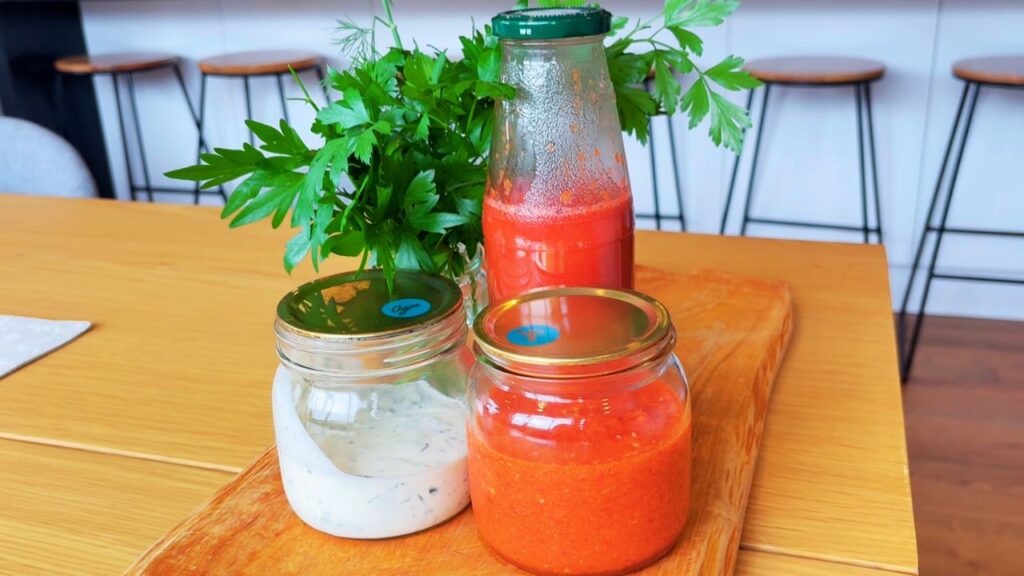
There was a time when I bought every sauce and dressing from the supermarket without thinking twice. It felt convenient. But once I started learning what was actually inside those bottles, refined seed oils, added sugars, stabilizers, and preservatives – I realized that the “convenience” was costing my health and my peace of mind.
When I began removing seed oils from our home, I thought I’d miss flavor. Instead, I discovered something better: the quiet satisfaction of building a kitchen that truly supports the body.
This week, I made three of our most-used condiments completely from scratch – ketchup, ranch, and sriracha, all seed-oil-free, free from refined sugar, and made with ingredients that actually feed the gut microbiome rather than deplete it.
And yes, they only last a few weeks. But that’s the point. Real food isn’t meant to sit on a shelf for years. It’s meant to live, nourish, and then be remade again.
The Shift Toward Real Food
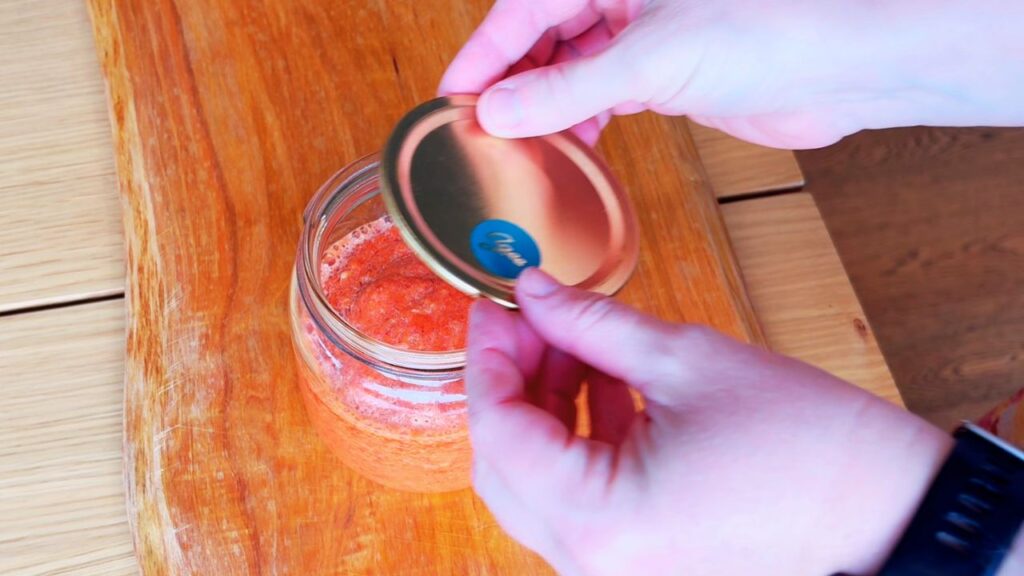
When I first switched to a seed-oil-free kitchen, I noticed how my grocery list got shorter. I stopped buying “pantry staples” that weren’t truly staples at all. Instead, I focused on whole ingredients – olive oil, butter, tallow, yogurt, honey, herbs, and spices – that could form the base of anything.
The biggest surprise? It wasn’t more work. It just required a different rhythm. A rhythm where food moved through my kitchen instead of sitting there indefinitely.
Making my own condiments became a small but powerful part of that shift. I started with ketchup – something my toddler loved, and then added ranch and sriracha as the flavor companions for family meals.
Each recipe turned into a lesson: about sugar, about living foods, and about what “fresh” actually means.
The Ketchup: Comfort and Clarity
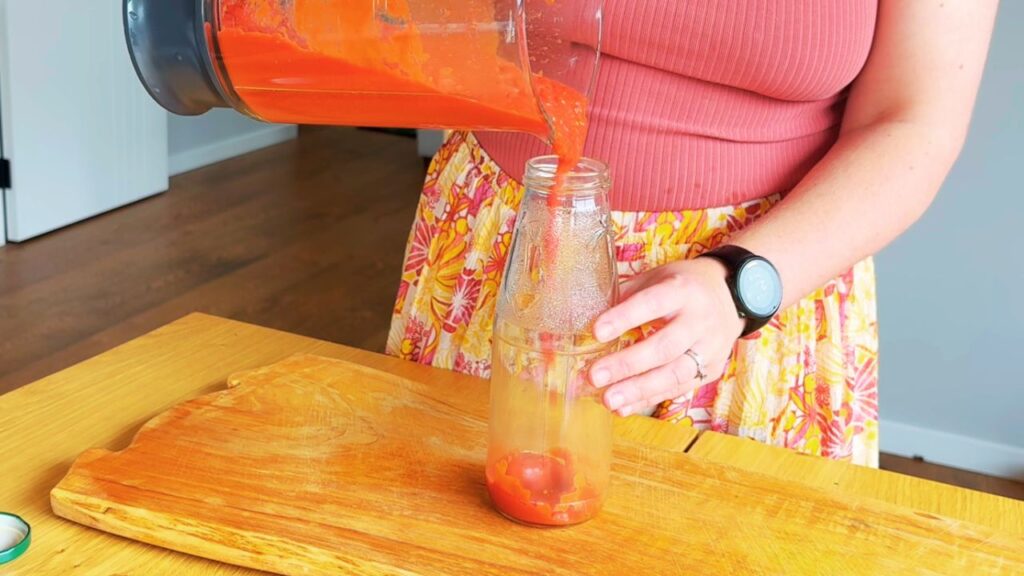
I started with the ketchup because it felt like the simplest one to replace.
The funny thing about ketchup is that it doesn’t usually contain seed oils – but it’s often loaded with refined sugar. That’s the real issue.
I opened my pantry and pulled out a tin of chopped tomatoes, a little tomato paste, apple cider vinegar, maple syrup, and my spices. That’s all it needed. I simmered everything together slowly, letting the scent fill the kitchen.
As the tomatoes reduced, the sauce darkened into that familiar deep red, only without the syrupy sweetness. I gave it a taste – it was bright and full of flavor, just enough tang from the vinegar and a gentle roundness from the honey.
Once it cooled, I poured it into a clean glass jar. It made enough to last about a month in the fridge, and that in itself felt grounding. I liked knowing that this ketchup wasn’t meant to live forever. It was meant to be eaten, enjoyed, and remade when it ran out.
That shorter shelf life was a quiet reminder that this was food with life still in it, not something preserved beyond recognition. It made me more aware of how real food connects us to time and season – to movement instead of stagnation.
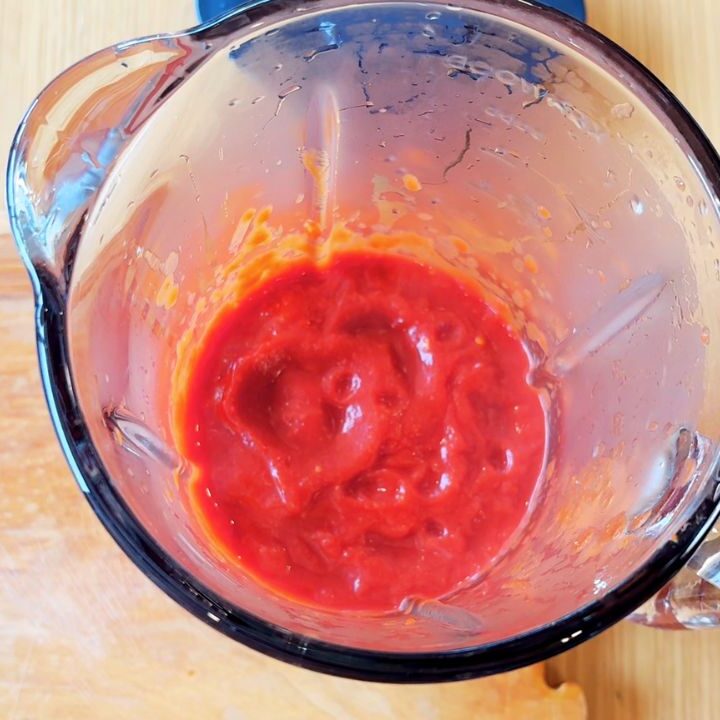
Seed-Oil-Free Ketchup (Refined-Sugar-Free & Gut-Friendly)
A rich, tangy ketchup made with whole tomatoes, maple syrup, and apple cider vinegar — completely seed-oil-free and refined-sugar-free. This simple recipe supports your gut microbiome and brings real-food flavor to your everyday meals.
Ingredients
- 400 g tinned chopped tomatoes
- 170 g tomato paste
- 2 tbsp apple cider vinegar
- 2 tbsp maple syrup
- 1 tsp onion powder
- ½ tsp garlic powder
- ½ tsp sea salt
- ¼ tsp ground cinnamon (optional, for warmth)
- ⅛ tsp allspice or smoked paprika (optional, for depth)
Instructions
- Add all ingredients to a small saucepan and bring to a gentle simmer over low–medium heat.
- Simmer for 15–20 minutes, stirring occasionally, until slightly thickened and flavors meld together.
- Taste and adjust seasoning — you can add more maple syrup for sweetness or more vinegar for brightness.
- Allow to cool slightly, then blend until smooth using an immersion blender or regular blender.
- Transfer to a clean glass jar and refrigerate. Keeps up to 2 weeks in the fridge.
Notes
Nutrition Information:
Yield: 16 Serving Size: 1Amount Per Serving: Calories: 21Total Fat: 0gSaturated Fat: 0gUnsaturated Fat: 0gSodium: 81mgCarbohydrates: 5gFiber: 1gSugar: 3gProtein: 1g
The Ranch: Calm and Connection
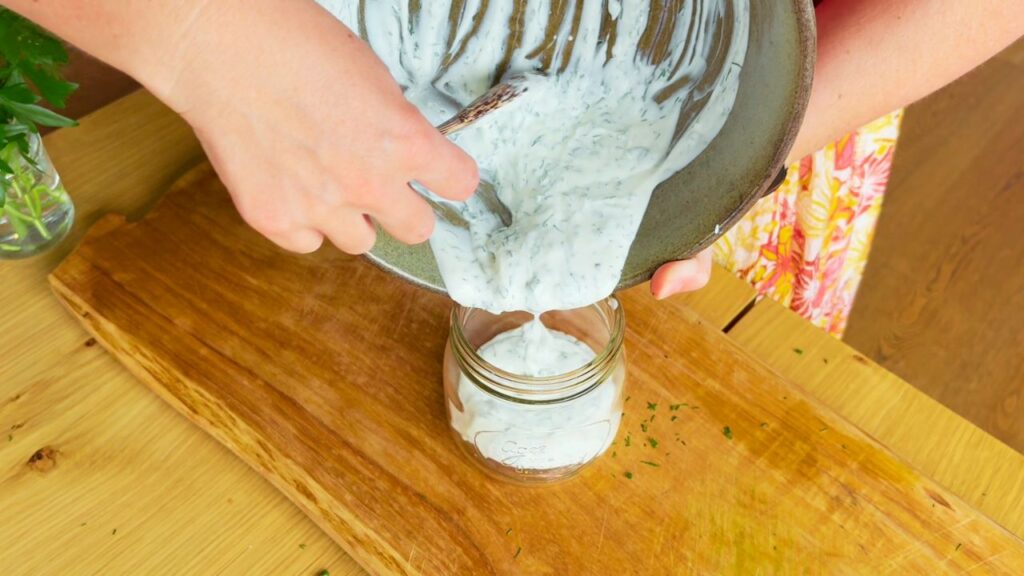
Next, I made ranch – because a creamy dressing or dip is something we use constantly. For years I avoided it, convinced that every ranch had to start with mayonnaise or buttermilk full of seed oils. But it doesn’t.
I mixed together thick plain yogurt, a spoon of sour cream, lemon juice, herbs, and salt. Simple. The yogurt gave it a lovely tang, and the lemon lifted the flavor just enough.
What I love most about this version is that it’s naturally probiotic. The live cultures from the yogurt make it one of those beautiful gut microbiome recipes that quietly support health without needing any supplements or gimmicks.
When I tasted it, I realized it had everything I wanted from store-bought ranch but none of that artificial heaviness. It was light, creamy, and alive.
I poured it into a jar and let it chill. It lasted about five days before the flavor started to shift slightly – that soft sign of life. A gentle reminder that freshness and impermanence can be beautiful.
In a world that celebrates shelf life, it felt good to celebrate real life instead.
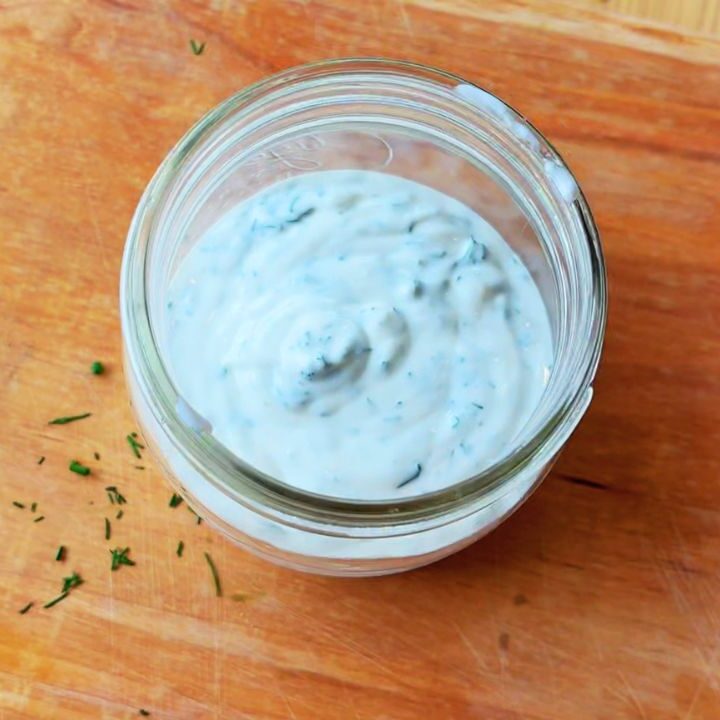
Probiotic Ranch (Seed-Oil-Free & Gut-Friendly)
A creamy, seed-oil-free ranch made with probiotic yogurt and fresh herbs. This gut-microbiome-supportive dressing is perfect for salads, wraps, or dipping - full of live cultures, no refined sugar, and completely real food.
Ingredients
- ½ cup unsweetened full-fat yogurt (preferably live-culture or Greek-style)
- ½ cup sour cream or additional yogurt
- 1 tbsp lemon juice
- ½ tsp sea salt
- ½ tsp garlic powder
- ½ tsp onion powder
- 2 tbsp finely chopped fresh parsley
- 1 tbsp finely chopped fresh dill
- 1 tbsp finely chopped chives
- 1–2 tbsp water or milk (to thin, if desired)
Instructions
- In a mixing bowl, whisk together yogurt, sour cream, apple cider vinegar, and maple syrup until smooth.
- Add the salt, garlic powder, and onion powder; whisk again to combine.
- Stir in the chopped herbs and mix gently.
- Adjust thickness with water or milk until desired consistency is reached.
- Transfer to a clean glass jar and refrigerate for 10 mins before use if you can. Use within 7–10 days.
Notes
Nutrition Information:
Yield: 12 Serving Size: 1Amount Per Serving: Calories: 46Total Fat: 3gSaturated Fat: 2gTrans Fat: 0gUnsaturated Fat: 1gCholesterol: 9mgSodium: 125mgCarbohydrates: 3gFiber: 0gSugar: 3gProtein: 2g
The Sriracha: Fire and Fermentation
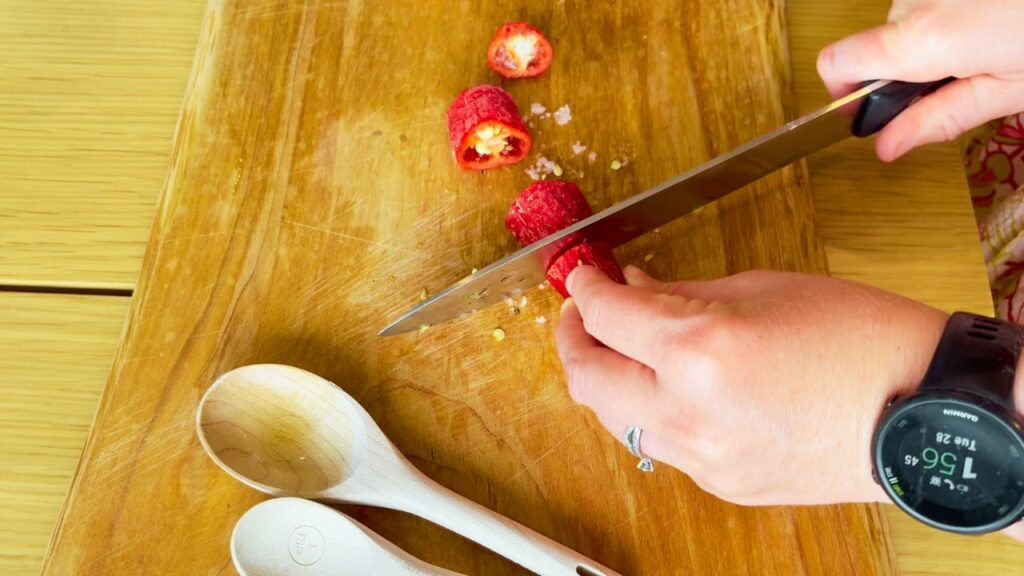
The last one I made was sriracha – our family’s favorite. Most bottles of sriracha in the supermarket have a familiar taste, but once you look closer, you’ll usually see refined sugar, preservatives, and sometimes even seed oil on the label.
I decided to make a simple version with fresh red chilies, garlic, honey, apple cider vinegar, and salt.
Half of the batch I simmered and blended into a quick sauce; the other half I fermented.
To ferment, I blended the chilies, garlic, salt, and honey, then added a spoonful of sauerkraut juice to kickstart the process. I left it loosely covered on the counter for a few days, stirring once a day.
By the third day, it had started to bubble and release that wonderful, tangy aroma – the smell of food transforming, alive with beneficial bacteria. I blended it smooth, stirred in a little vinegar, and poured it into a glass bottle.
This one would easily last for months in the fridge, naturally preserved by fermentation rather than chemicals. It’s fiery, complex, and full of depth – a perfect finishing touch for eggs, soups, or roasted vegetables.
That’s the beautiful irony: the condiment with the shortest ingredient list was the one with the longest natural shelf life, thanks to the power of live cultures.
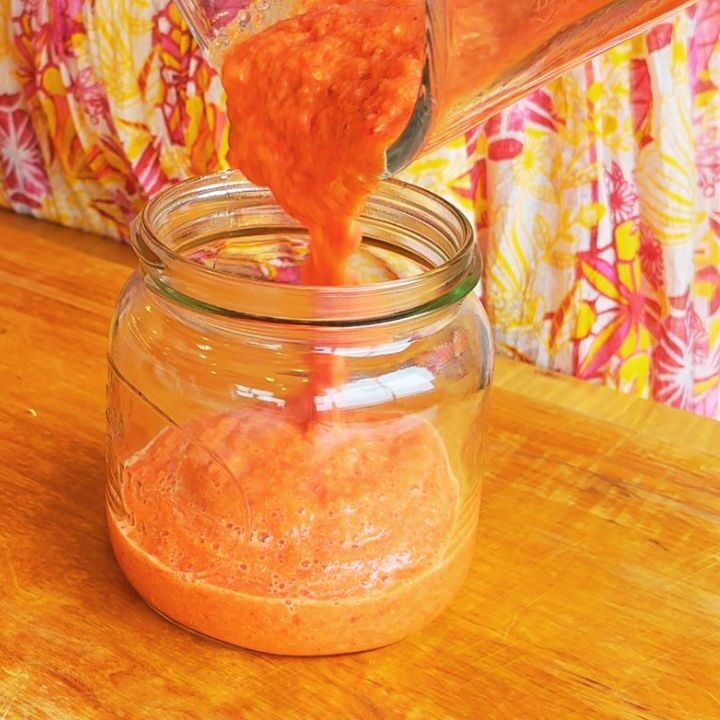
Fermented Seed-Oil-Free Sriracha (Refined-Sugar-Free & Gut-Healthy)
A vibrant, seed-oil-free sriracha made with fresh chilies, garlic, and maple syrup. Naturally fermented for deep flavor and rich in beneficial bacteria that support your gut microbiome. This version skips refined sugar and additives for a clean, fiery condiment that stays alive with real nutrition.
Ingredients
- 10–12 red chilies (a mix of hot and mild, stems removed)
- 2 garlic cloves
- 1–1½ tsp sea salt
- 1–2 tbsp maple syrup (to balance heat and fuel fermentation)
- 1 tbsp sauerkraut juice or whey (optional but speeds fermentation)
- 1–3 tbsp filtered water (as needed to blend)
- 1 tbsp apple cider vinegar (added after fermentation)
Instructions
- Blend: Combine chilies, garlic, sea salt, maple syrup, and sauerkraut juice or whey in a blender. Add just enough filtered water to create a thick paste.
- Ferment: Transfer the paste to a clean glass jar, leaving about 2 cm headspace. Cover loosely with a lid or cloth and leave at room temperature (18–22°C / 64–72°F). Stir once daily.
- Check readiness: After 3–5 days, the mixture should be lightly bubbly with a tangy aroma and slightly softened flavor.
- Blend again: Once fermented, blend until smooth and stir in apple cider vinegar.
- Bottle: Transfer to a clean jar or squeeze bottle, seal, and refrigerate.
Notes
Nutrition Information:
Yield: 20 Serving Size: 1Amount Per Serving: Calories: 955Total Fat: 10gSaturated Fat: 1gUnsaturated Fat: 6gCholesterol: 0mgSodium: 279mgCarbohydrates: 210gFiber: 34gSugar: 129gProtein: 44g
Nutritional values are automatically calculated and may not always be accurate. Values can vary based on specific ingredients, freshness, and portion sizes. These recipes use whole, real ingredients that don’t always align perfectly with database averages - particularly for fermented foods or homemade condiments. For the most accurate results, calculate nutrition information using your exact brands and measurements.
Why Shorter Shelf Life Matters
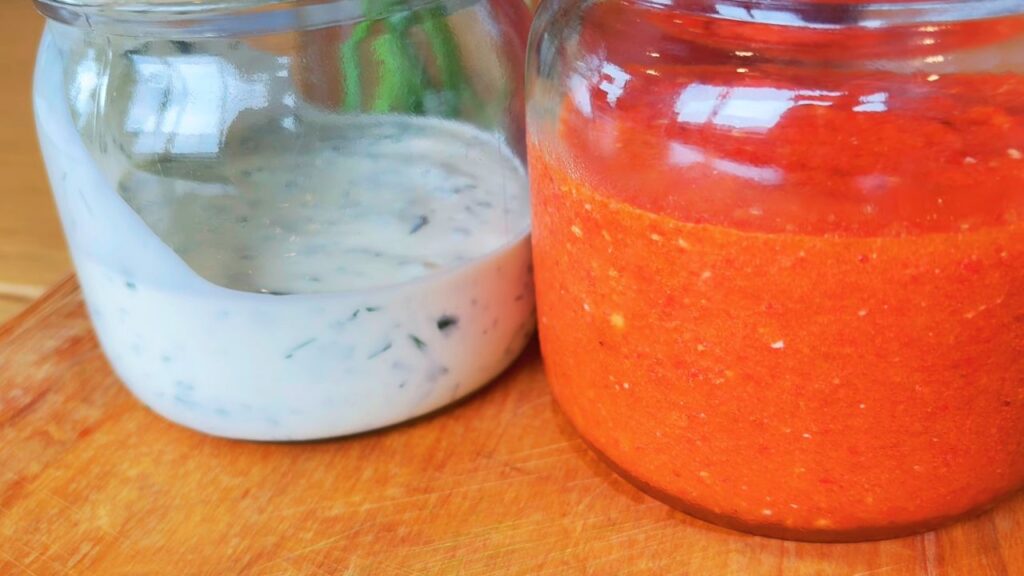
As I lined up the three jars on the counter, I realized that their limited freshness wasn’t a flaw – it was the whole point. Food that spoils quickly is food that’s still real, still part of nature’s rhythm.
The longer something lasts, the more removed it tends to be from life itself. Preservatives and stabilizers might make products convenient, but they often strip food of its enzymes, beneficial bacteria, and vibrancy.
When we accept shorter shelf life, we’re accepting freshness, flavor, and integrity. We’re saying yes to food that feeds both body and microbiome – and no to the illusion that longer-lasting means better.
Living Food, Living Body
Each of these seed-oil-free condiments did more than add flavor – they changed how my kitchen felt. The fridge looked cleaner, the meals tasted brighter, and there was less waste. I started noticing how much more energy I had after meals that used these sauces instead of store-bought ones.
That’s what real food does. It gives back. It supports the gut microbiome, which in turn supports your hormones, mood, and immunity.
And it brings rhythm back to the week – making, finishing, remaking. That’s the natural flow of food.
What to Read Next
If this post inspired you to bring more life into your kitchen, you might enjoy these next:
- How to Make Seed Oil Free Holiday Condiments from Scratch — Skip the store-bought jars and craft festive sauces and dressings that are seed-oil-free, naturally sweetened, and full of real flavor.
- How to Replace Store-Bought Bread with These 2 Seed-Oil-Free Sourdough Recipes — Learn how to bake soft, flavorful sourdough loaves without seed oils: simple, nourishing recipes that bring real bread back to the family table.
- Seed Oil Free Mayo | Easy Mayonnaise Without Vegetable Oil — Whip up creamy, rich mayonnaise in minutes using wholesome ingredients: no vegetable oils, no additives, just clean, gut-friendly goodness.
From My Kitchen to Yours
If you’d like to see how these condiments came together, you can watch my full video, 3 Seed-Oil-Free Condiments You’ll Actually Use, over on YouTube – it’s the perfect visual companion to this post:
And if you’re just beginning your journey toward a no-seed-oil, gut-healthy kitchen, you can download my Seed-Oil-Free Kitchen Starter Guide – it’s a free PDF with simple swaps, shopping tips, and my go-to pantry basics to get you started.
See my Items I Use + Love page for the everyday tools and ingredients featured in my videos and recipes.
Thank you for being here, for valuing food that’s alive, and for bringing that calm, wholesome rhythm into your family’s meals.

Leave a Reply